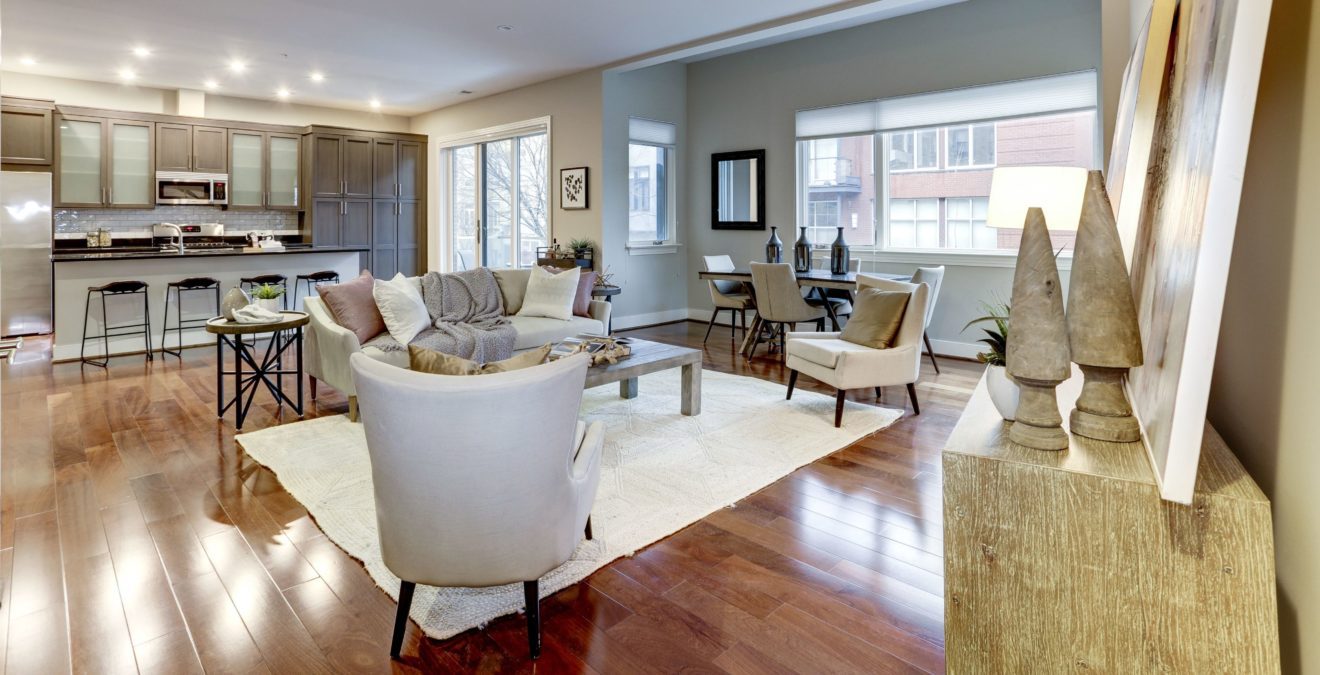
Decorating is one of the most exciting things about moving. Whether your trading up or downsizing, buying a new home provides the opportunity to get rid of old clutter and design a brand new space. That said, the process comes with challenges, and creating a new furniture layout is one of them.
Will you be able to fit that oversized couch through the narrow hallway in your new place? And will your existing table and chairs—or the set you’re planning to buy—overcrowd your kitchen? These may seem like small concerns. But if you don’t answer them before moving day rolls around, you may be headed for a lot of unnecessary frustration.
Here are a few steps that can make measuring and laying out the furniture in your new home easier.
How to measure your new space
There’s only one way to determine how well large items will fit into your new space, and that’s by measuring it. Start with your doors and hallways, since pieces of furniture will have to pass through them to get to their final destination. Grab a tape measure and a notebook, and use the following tips.
• Measure the length and width of all entrances and hallways
• Don’t forget to measure the diagonal width
• Note the corners you’ll have to navigate, and where they’re located
• Jot down potential obstructions (light fixtures, etc.)
Next up, it’s time to measure your rooms. Of course, you’ll want to record the height and width of each room to create your layout later on. But there are a few other considerations to remember.
• Measure the doorway (height, width, and on the diagonal)
• Include the dimensions of any alcoves
• Record the dimensions and placement of windows, radiators, etc.
How to measure your furniture
Now you’ll need to measure the furniture you’re planning to move into your new space. Note that if you’re buying new items, it might help to create your layout beforehand using furniture models that conform to standard dimensions (more on using models below).
• Measure the height and width of each piece of furniture
• For sofas and chairs, be sure to capture the depth (from front to back)
• Always measure the diagonal length (especially for bookcases and other tall pieces)
• You’ll want to add approximately five inches to each measurement for clearance
Planning your layout
To plan your layout before moving in, you’ll need to create a floor plan. Simply grab some graph paper, a ruler, and a pencil, along with the room and furniture dimensions you’ve already recorded.
Using your measurements, ensure that your furniture will fit through all entrances and hallways. Once that’s out of the way, sketch each room on a piece of graph paper. To keep things simple, make each square represent one foot. Be sure to include all windows, doors, and alcoves in your sketch.
Next up, you’ll need to create models of your furniture to fit into your rooms. Using the same scale (one square for each foot), draw your furniture on a piece of graph paper. Cut these items out so that you can arrange them on your room sketches to see what looks best.
Of course, arranging furniture isn’t just about aesthetics. In order for a room to be comfortable and functional, you’ll need to leave the right amount of space between pieces of furniture, walls, and doorways.
Furniture-spacing basics
As you tweak your layout, be aware of furniture-spacing conventions. Here are just a few examples of how much space you should leave around different items in a room.
• 50-100 inches between a couch and a chair
• 18 inches between the front of a couch and a coffee table
• 45 inches between a dining room table and a wall
You can find more furniture-spacing basics here.
In addition to spacing, there are a few other layout considerations you should keep in mind to maximize the comfort of your home.
Find your focal points
Every room should have a focal point. In your living room, you’ll have to create one. Is it a fireplace? Will it be an entertainment console?
Think about balance
Be careful not to crowd furniture to one side or area of a room. Try to be mindful of traffic patterns (how you and your family will actually use the space).
Don’t forget doors and windows
Make sure you don’t place your furniture too close to your doorways, and ensure that it doesn’t block your windows.
Your living space can have a major impact on your day-to-day quality of life. Creating a layout for your new home before you move in can help ensure that you start off on the right foot!
Looking for a new house or condo to decorate? We have the experience and neighbourhood expertise to help you find your dream home. To discuss your needs, call us at 202.270.1081, or send an email to [email protected].
 The Stokes Group is a team of dedicated professionals who have passion for the real estate business and will advocate for our clients with the utmost honesty, integrity, and confidentiality. We believe in building solid relationships with our clients and that starts by getting to know who we are. Follow us on Facebook and Instagram.
The Stokes Group is a team of dedicated professionals who have passion for the real estate business and will advocate for our clients with the utmost honesty, integrity, and confidentiality. We believe in building solid relationships with our clients and that starts by getting to know who we are. Follow us on Facebook and Instagram.

The Stokes Group is a team of dedicated professionals who have passion for the real estate business and will advocate for our clients with the utmost honesty, integrity, and confidentiality.




